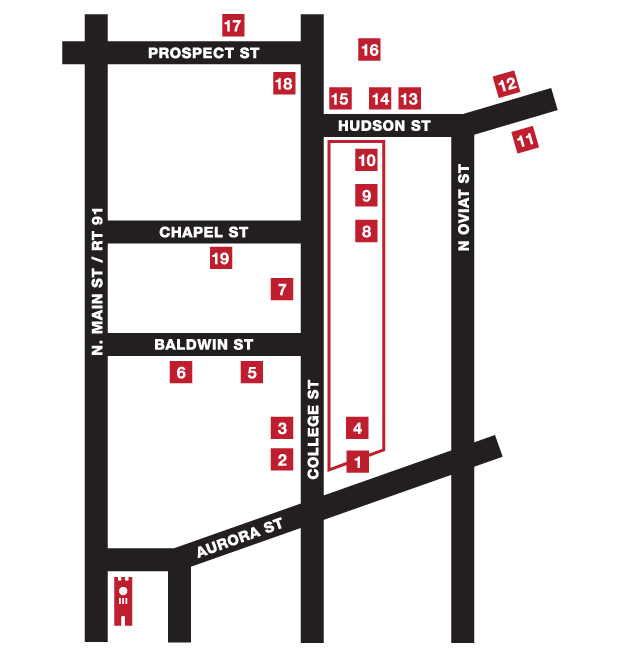Thurs, Nov 13, 7:00pm at Barlow Community Center. Dr. Megan Shaeffer discusses the history and archaeology of Wood Hollow Metro Park
Tour #4: A Walking Tour of Western Reserve Academy & Its Neighbors
Approximate Walking Time: 30-40 minutes
Many of the areas and buildings on this tour of Hudson’s downtown residential neighborhood are listed in the National Register of Historic Places. Those properties with the white ”HHA” marker have been researched and authenticated by Hudson Heritage Association and may be noteworthy for their architecture, their past ownership or for the activities that took place within them. The markers typically carry the name of the original owner of the property.
This area is blessed with a range of architecture representative of the Western Reserve and other styles of significance. Be sure to note the features and elements of each building that help make Hudson such a rich reflection of its past and its citizenry – a storied group of individuals who were determined to build a community reflecting the elegance of New England in the Ohio wilderness.
Read A Brief History of Hudson
For a better mobile experience, click the map to view it in its own window, to reduce scrolling.
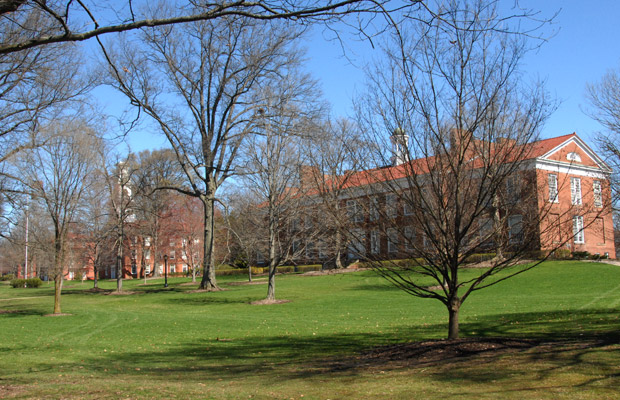 1. College Street from Aurora Street to Hudson Street, Brick Row
1. College Street from Aurora Street to Hudson Street, Brick Row
Two months after Ohio became a state in 1803, the Ohio State Assembly gave David Hudson and 12 others the right to found a college. Classes were not held until 1826, when the first building was erected high on a ridge in Hudson. Five other buildings soon followed in line. Those still standing include Loomis Observatory (1838), The Chapel (1836), the President’s House (1829-30) and North Hall (1837-38). In 1913, J.W. Ellsworth built Seymour Hall (115 College Street) on the site of two original buildings that had been demolished.
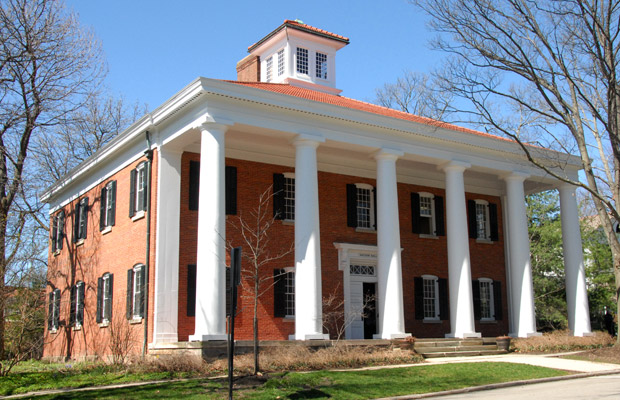 2. 88 College Street (1879/1908), Hayden Hall
2. 88 College Street (1879/1908), Hayden Hall
Built as a cheese warehouse for Straight and Son, this building was renovated to its present form by J. W. Ellsworth in 1908. Today, this structure houses the music department of Western Reserve Academy.
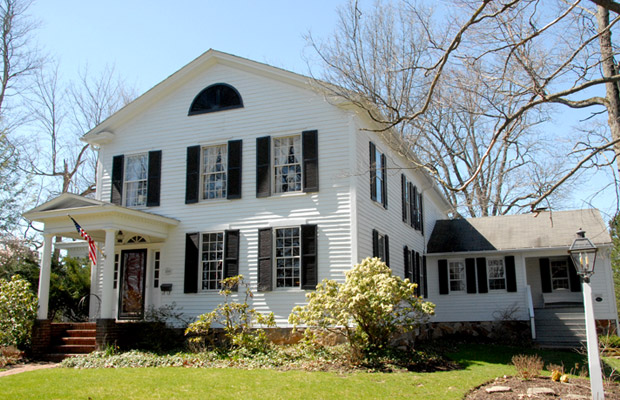 3. 92 College Street (1835), Harvey Coe House
3. 92 College Street (1835), Harvey Coe House
The Reverend Harvey Coe was the first elected trustee of Western Reserve College and a vocal part of the Abolition controversy that raged on the campus in the early 1830s. Details in the house were copied from pattern books, a common practice at the time.
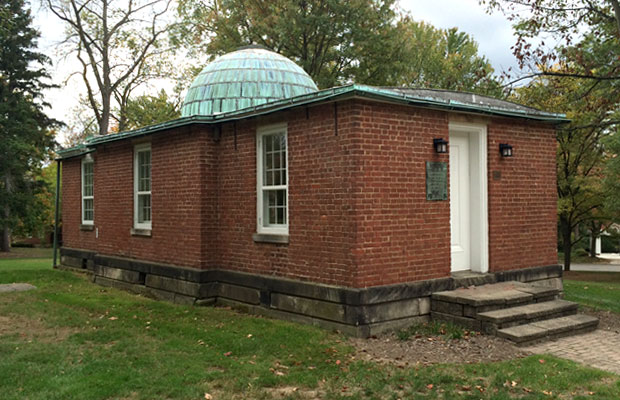 4. 93 College Street (1838), Loomis Observatory
4. 93 College Street (1838), Loomis Observatory
The second oldest observatory in the United States, this building still houses the original instruments purchased in Europe by Professor Loomis in 1837. Loomis designed the building; Simeon Porter built it to his specifications.
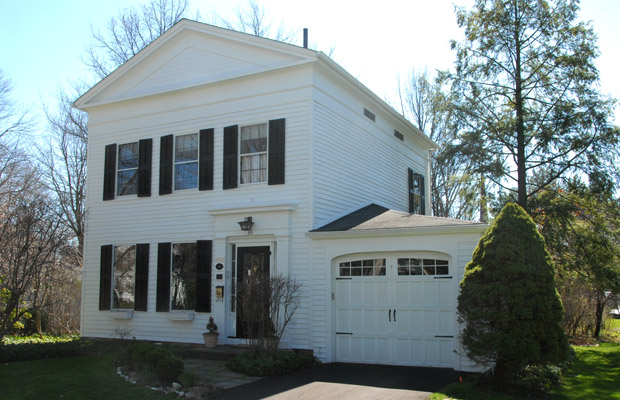 5. 36 Baldwin Street (1846), Vernon D. Taylor House
5. 36 Baldwin Street (1846), Vernon D. Taylor House
A classic Greek Revival house, the front door and door case of this building were designed from a pattern book by Asher Benjamin, who greatly influenced American architecture before the Civil War.
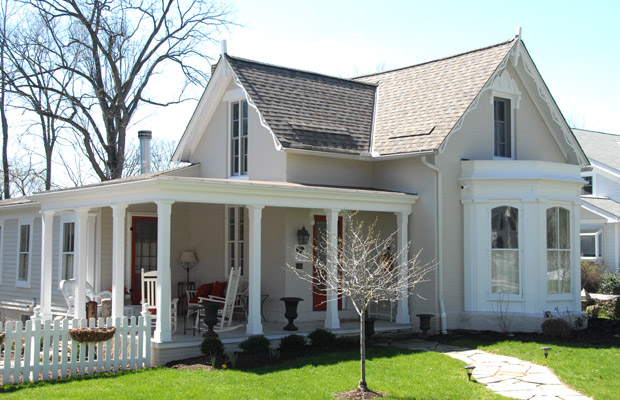 6. 20 Baldwin Street (1851), Bunnell-Read House
6. 20 Baldwin Street (1851), Bunnell-Read House
This Gothic Revival cottage was built by Frederick Bunnell, an early Hudson builder, as an investment property.
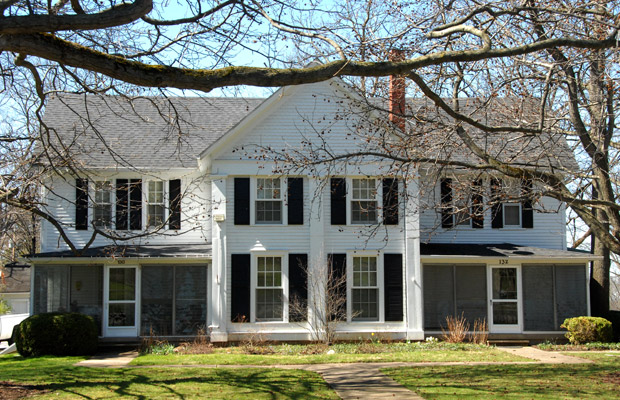 7. 130-132 College Street (1841), Philo Wright House
7. 130-132 College Street (1841), Philo Wright House
Probably built by Porter and Rice, architects for the Athenaeum and Nathan Seymour’s house, this structure has been much altered and serves as an Academy dormitory.
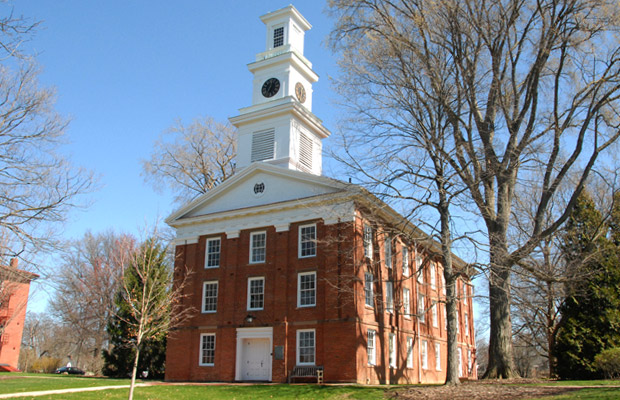 8. 135 College Street (1836), Academy Chapel
8. 135 College Street (1836), Academy Chapel
The focal point of WRA’s significant “Brick Row,” the plans for the Chapel came from New England and were similar to those for Johnson Chapel at Amherst College. The ground floor originally served as the college library.
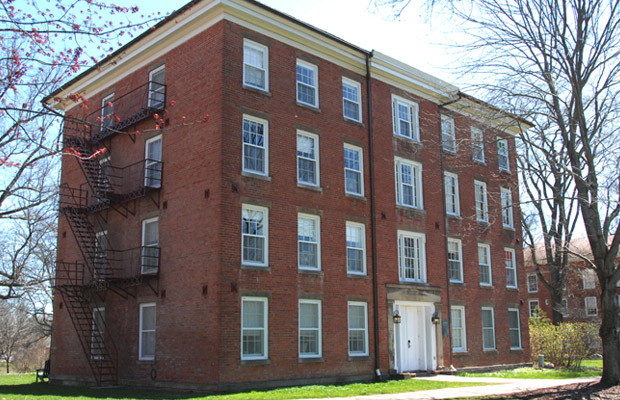 9. 147 College Street (1837-38), North Hall
9. 147 College Street (1837-38), North Hall
Built from a mail order plan from New Haven, Connecticut, this Federal building – the least altered of all Academy structures – has remained a dormitory for its entire history.
 10. 153-155 College Street (1829-30), The President’s House
10. 153-155 College Street (1829-30), The President’s House
Designed and built by architect/builder Lemuel Porter to house the College president and head of the theological department, it is considered one of the most elegant buildings in the Western Reserve. The fine detail of the twin doorways and the graceful fanlights are examples of the Federal style.
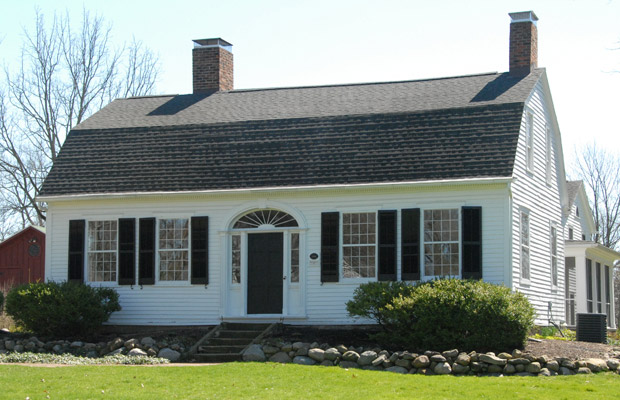 11. 120 Hudson Street (1832), Elizur Wright, Jr House
11. 120 Hudson Street (1832), Elizur Wright, Jr House
Gambrel-roofed houses are unusual in the Western Reserve. This one was built by Leander Starr for Elizur Wright Jr., a mathematics professor often called “the father of American Life Insurance.” An ardent Abolitionist, Wright resigned from the Western Reserve faculty over the colonization/abolition controversy. His father, a brilliant mathematician in his own right, stepped in at the age of 72 to replace his son.
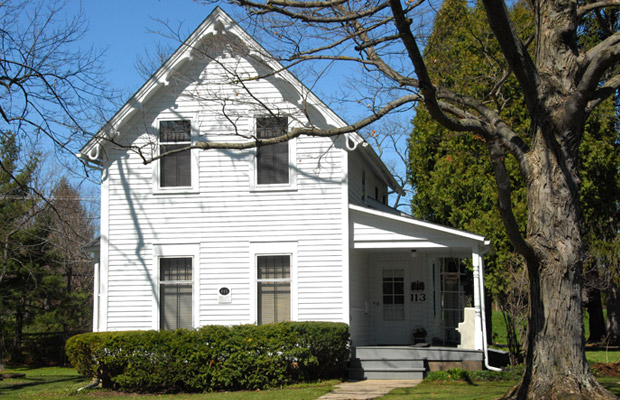
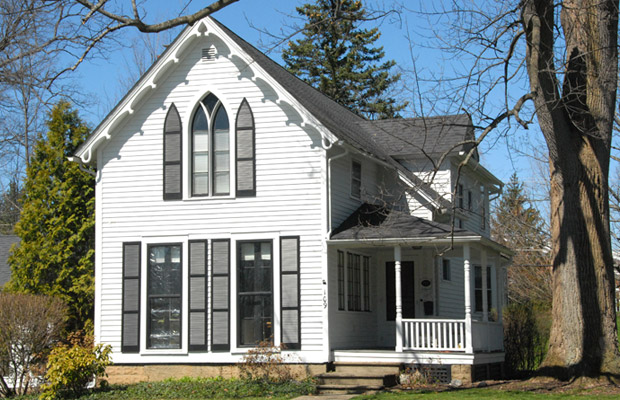 12. 113 Hudson Street (1855), Gross-Gregory House, 109 Hudson Street (1855) Baldwin-McKisson House:
12. 113 Hudson Street (1855), Gross-Gregory House, 109 Hudson Street (1855) Baldwin-McKisson House:
These two Gothic Revival cottages were built during Hudson’s railroad era. The lancet window on one has been replaced by two windows.
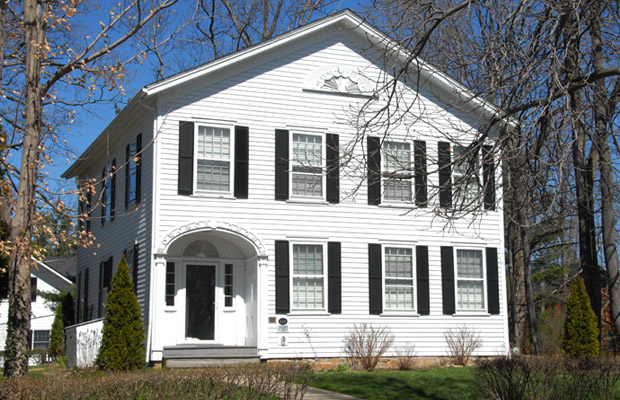 13. 79 Hudson Street (1831), Rufus Nutting House
13. 79 Hudson Street (1831), Rufus Nutting House
Professor Rufus Nutting was the first resident of this Federal style house. Its doorway, fanlight and 12-over-12 windows are its most outstanding features. It has been a dining hall and a faculty residence for both the college and the academy.
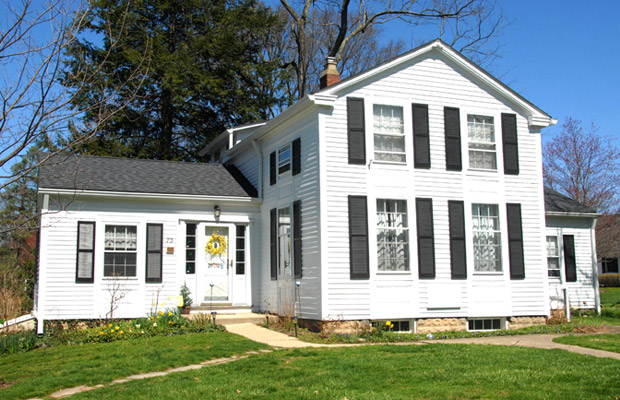 14. 73 Hudson Street (1835), Morley Cottage
14. 73 Hudson Street (1835), Morley Cottage
This unpretentious cottage has been home to several renowned men: Ansel Clark, newspaper editor; Elias Loomis, astronomer; and Edward William Morley, who first calculated the atomic weight of oxygen and whose work contributed to Einstein’s Theory of Relativity.
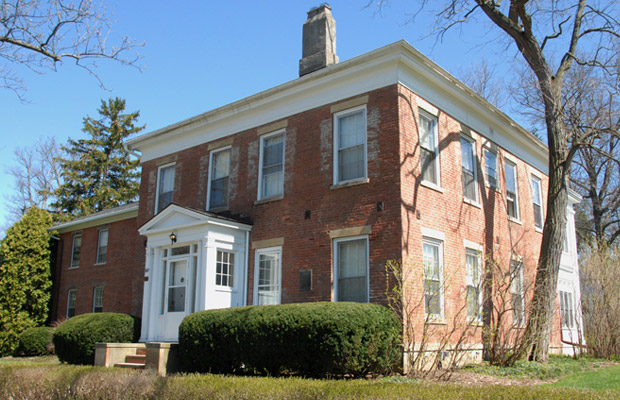 15. 169 College Street (1839), Carroll Cutler House
15. 169 College Street (1839), Carroll Cutler House
Built by Professor Clement Long, this Federal brick house was used as the official residence of Carroll Cutler, president of the college at the time of its move to Cleveland. It was renovated by J.W. Ellsworth in 1913.
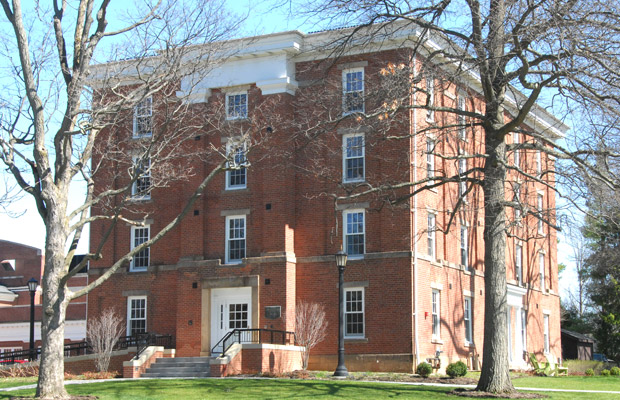 16. 187 College Street (1843), The Athenaeum
16. 187 College Street (1843), The Athenaeum
Built by Porter and Rice to house the college’s natural science studies, this late Federal style building was to have been the first structure in a second Brick Row extending to the north. The other structures were never built. Ohio’s first Phi Beta Kappa chapter was founded here in 1847.
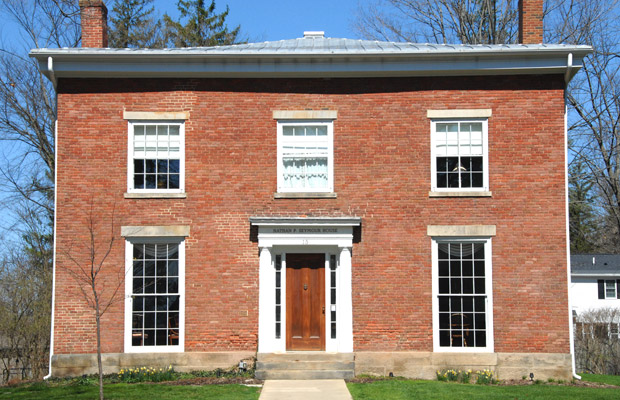 17. 15 Prospect Street (1843), Seymour House
17. 15 Prospect Street (1843), Seymour House
Classics professor Nathan Perkins Seymour’s was the only house built of the five faculty residences planned for this block. His builders were Lemuel Porter’s son Simeon and Archibald Rice, an architect brought from Connecticut to help complete the Brick Row extension at Western Reserve College.
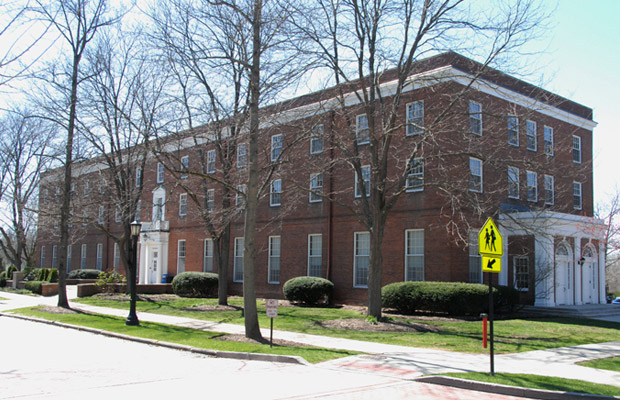 18. 178 College Street (1922), Ellsworth Hall
18. 178 College Street (1922), Ellsworth Hall
Serving in turns as a dormitory, dining room and common room for Western Reserve Academy, this large building reflects the architectural style of the original college buildings. Designed by J.W.C. Corbusier, it is part of James Ellsworth’s rebuilding project for the school.
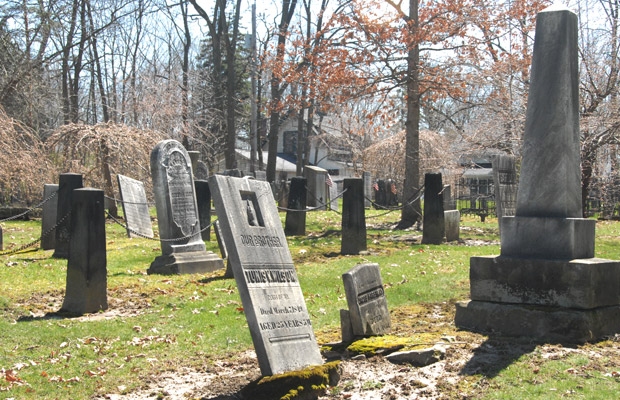 19. Chapel Street Old Hudson Township Burying Ground
19. Chapel Street Old Hudson Township Burying Ground
This cemetery served as the final resting place for Hudson’s early settlers. It closed in 1837. The town’s founder, David Hudson, is buried here, as is Owen Brown, father of Abolitionist John Brown.
